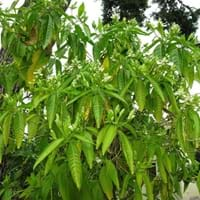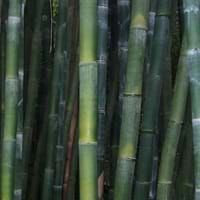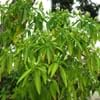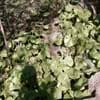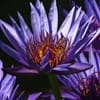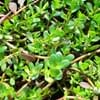Life Span
Perennial
Perennial
Type
Herbs, Perennial
Grass
Origin
South-Eastern Asia
China
Types
Not Available
Greenstripe Vivax, Moso, Weavers Bamboo, Oldhamii
Number of Varieties
Not Available
Habitat
Semi desert, Wet forest
Subtropical climates, Wet Woods
USDA Hardiness Zone
9-11
8-11
AHS Heat Zone
12 - 9
12 - 8
Sunset Zone
Not Available
H1, H2, 8, 9, 14, 15, 16, 17, 18, 19, 20, 21, 22, 23, 24
Habit
Clump-Forming
Upright/Erect
Minimum Width
Not Available
Flower Color
White
Not Available
Flower Color Modifier
Bicolor
Bicolor
Fruit Color
Not Available
Not Available
Leaf Color in Spring
Dark Green
Dark Green
Leaf Color in Summer
Green, Light Green
Light Green
Leaf Color in Fall
Dark Green
Dark Green
Leaf Color in Winter
Dark Green
Dark Green
Leaf Shape
Elliptic
Acicular
Plant Season
Spring, Summer, Fall, Winter
Spring, Summer, Fall, Winter
Sunlight
Full Sun, Partial Sun, Partial shade
Full Sun, Partial Sun
Growth Rate
Very Fast
Slow
Type of Soil
Clay, Loam, Sand
Clay, Loam, Sand
The pH of Soil
Acidic, Neutral, Alkaline
Acidic, Neutral, Alkaline
Soil Drainage
Average
Average
Bloom Time
Indeterminate
Not Available
Tolerances
Wet Site
Drought
Where to Plant?
Container, Ground
Container, Ground
How to Plant?
Stem Cutting
Grafting, Seedlings, Stem Planting, Transplanting
Plant Maintenance
Medium
Medium
Watering Requirements
Average Water Needs, Needs good drainage
Needs watering once a week, Use Mulches to help prevent water loss during hot and windy weather, Water Deeply
In Summer
Lots of watering
Lots of watering
In Spring
Moderate
Moderate
In Winter
Average Water
Average Water
Soil pH
Acidic, Neutral, Alkaline
Acidic, Neutral, Alkaline
Soil Type
Clay, Loam, Sand
Clay, Loam, Sand
Soil Drainage Capacity
Average
Average
Sun Exposure
Full Sun, Partial Sun, Partial shade
Full Sun, Partial Sun
Pruning
Cut away fading foliage, Cut upper 1/3 section when young to enhancegrowth, Remove damaged leaves, Remove dead branches, Remove dead leaves
Do not prune during shooting season, Prune in late summer or fall, Remove damaged leaves
Fertilizers
All-Purpose Liquid Fertilizer, Don't use high pH fertilizers
All-Purpose Liquid Fertilizer
Pests and Diseases
Aphids, Downy mildew, Dry root rot, Rust, Spider mites
Black sooty mold, Mealybugs, Mosaic viruses, Powdery mildew, pythogens, Stem rot
Plant Tolerance
Heat Tolerance, Humidity
Drought
Flower Petal Number
Single
Single
Foliage Texture
Medium
Coarse
Foliage Sheen
Matte
Matte
Attracts
Aphids, Bees, Butterflies, Snails
Deers, Rabbits, Rats, Squirrels
Allergy
Dizziness, Mouth itching, Vomiting
allergic conjunctivitis, Asthma, Inflammation, Throat itching
Aesthetic Uses
Cottage Garden, Showy Purposes
Showy Purposes
Beauty Benefits
Good Cleanser, Good for the Scalp
Not Available
Environmental Uses
Air purification, Insect Repellent
Agroforestry, Air purification, No fertilizer, pesticides, or herbicides needed
Medicinal Uses
Antipyretic, Bronchitis, Cough, Digestive disorders, Ear infections, Expectorant, Laxative, Migraines, Piles, Rheumatism, Throat infection, Treating fever
Clears heat, Cold, fidgeting, Treating fever, Urinary tract problems
Part of Plant Used
Bark, Leaf Stalks, Leaves
Leaves, Stem
Other Uses
Biomass for fuel, Can be made into a herbal tea, Culinary use, Oil is used for aromatherapy, Used as a laxative
Application in Handicrafts, Showy Purposes, Used As Food, Used in Furniture, Used in paper industry
Used As Indoor Plant
No
No
Used As Outdoor Plant
Yes
Yes
Garden Design
Container, Hedges, Mixed Border, Screening / Wind Break, Tropical
Feature Plant, Screening / Wind Break, Tropical
Botanical Name
Justicia adhatoda
BAMBUSA oldhamii
Common Name
Malabar nut, Adulsa, Adhatoda, Vasaka
Clumping Bamboo, Giant Timber Bamboo, Oldham's Bamboo
In Hindi
अडुळसा, अडुसा
Bānsa
In German
Indisches Lungenkraut
Bambus
In French
Justicia adhatoda
Bambou
In Spanish
Justicia adhatoda
Bambú
In Greek
Justicia adhatoda
μπαμπού
In Portuguese
Justicia adhatoda
bambu
In Polish
Justicia adhatoda
Bambus
In Latin
Justicia adhatoda
Bamboo
Phylum
Magnoliophyta
Magnoliophyta
Class
Magnoliopsida
Liliopsida
Order
Scrophulariales
Poales
Family
Acanthaceae
Poaceae
Clade
Angiosperms, Monocots
Not Available
Tribe
Justicieae
Bambuseae
Subfamily
Acanthoideae
Not Available
Number of Species
Not Available
Season and Care of Malabar nut and Giant Timber Bamboo
Season and care of Malabar nut and Giant Timber Bamboo is important to know. While considering everything about Malabar nut and Giant Timber Bamboo Care, growing season is an essential factor. Malabar nut season is Spring, Summer, Fall and Winter and Giant Timber Bamboo season is Spring, Summer, Fall and Winter. The type of soil for Malabar nut is Clay, Loam, Sand and for Giant Timber Bamboo is Clay, Loam, Sand while the PH of soil for Malabar nut is Acidic, Neutral, Alkaline and for Giant Timber Bamboo is Acidic, Neutral, Alkaline.
Malabar nut and Giant Timber Bamboo Physical Information
Malabar nut and Giant Timber Bamboo physical information is very important for comparison. Malabar nut height is 460.00 cm and width Not Available whereas Giant Timber Bamboo height is 1,000.00 cm and width 10.00 cm. The color specification of Malabar nut and Giant Timber Bamboo are as follows:
Malabar nut flower color: White
Malabar nut leaf color: Dark Green
Giant Timber Bamboo flower color: Not Available
- Giant Timber Bamboo leaf color: Dark Green
Care of Malabar nut and Giant Timber Bamboo
Care of Malabar nut and Giant Timber Bamboo include pruning, fertilizers, watering etc. Malabar nut pruning is done Cut away fading foliage, Cut upper 1/3 section when young to enhancegrowth, Remove damaged leaves, Remove dead branches and Remove dead leaves and Giant Timber Bamboo pruning is done Do not prune during shooting season, Prune in late summer or fall and Remove damaged leaves. In summer Malabar nut needs Lots of watering and in winter, it needs Average Water. Whereas, in summer Giant Timber Bamboo needs Lots of watering and in winter, it needs Average Water.
